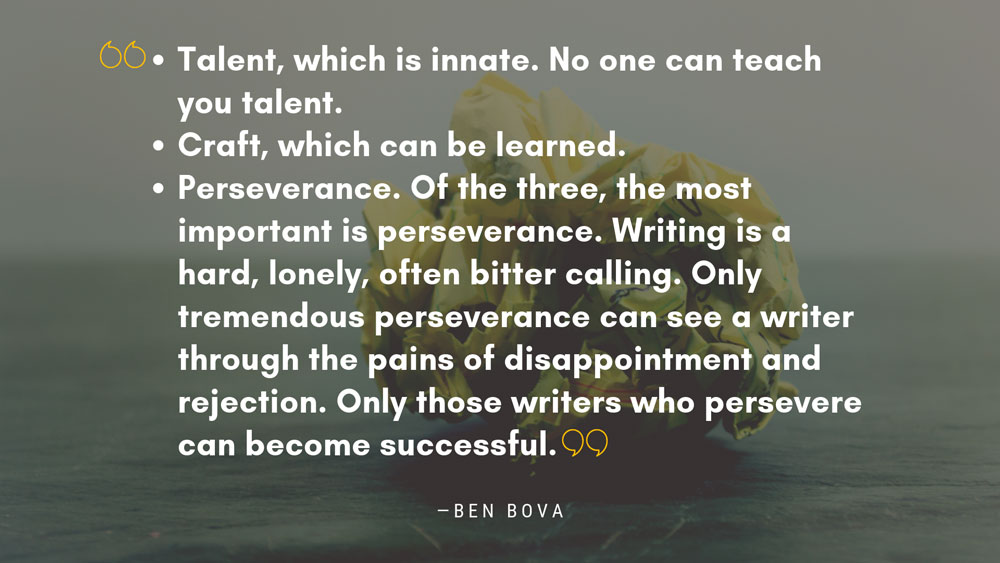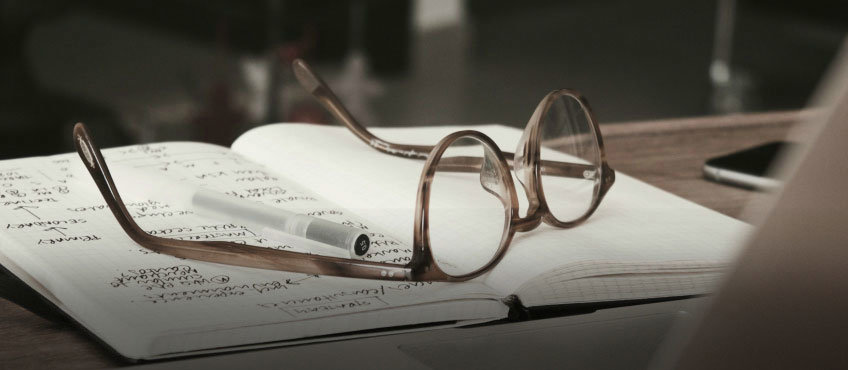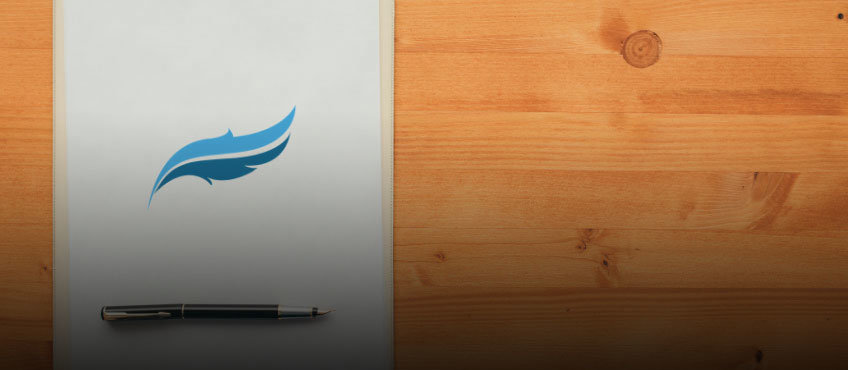Written by Scribendi
You did the research. You conducted the study. You still remember that first morning at your desk: a mug of coffee steaming to your right and reams of crumpled notes to your left, next to a stack of articles marked up and highlighted beyond recognition. The way that blank white screen glared back at you, mocking you. Judging you. That moment of apprehension as you typed the first word.
There were bad days. There were good days. Some nights, you rolled over in bed, wondering if you ought to just scrap the whole thing. Other nights, you collapsed onto your pillow, exhausted, satisfied, and drained. You finished the first draft. You showed it to your advisor and colleagues. They took the liberty of editing it to shreds.
You thought about dropping out and becoming a door-to-door encyclopedia salesperson. Instead, you wrote the second draft. And the third draft. Finally, the day came when you could grasp something hard-won in your hands. It took months of blood, sweat, and tears, but you did it. You completed your academic paper.
Then, you took the most important step.
You sent it off to an academic journal, with the same mixture of dread and pride parents experience on their child's first day of kindergarten. You waited a month. Two months. Nearly half a year passed. Some days, you almost forgot that your baby was out there, sweating underneath someone's magnifying glass.
One day, a letter arrived in the mail. Your heart stopped. You waited a few moments before tearing it open. You squinted at the tiny print.
Rejected.
Your paper had been rejected.
Sadly, the scene described above is not unfamiliar to any writer, academic or otherwise. There's no denying the sting of a rejection slip. As science fiction author Isaac Asimov wrote:
"Rejection slips, or form letters, however tactfully phrased, are lacerations of the soul, if not quite inventions of the devil—but there is no way around them."
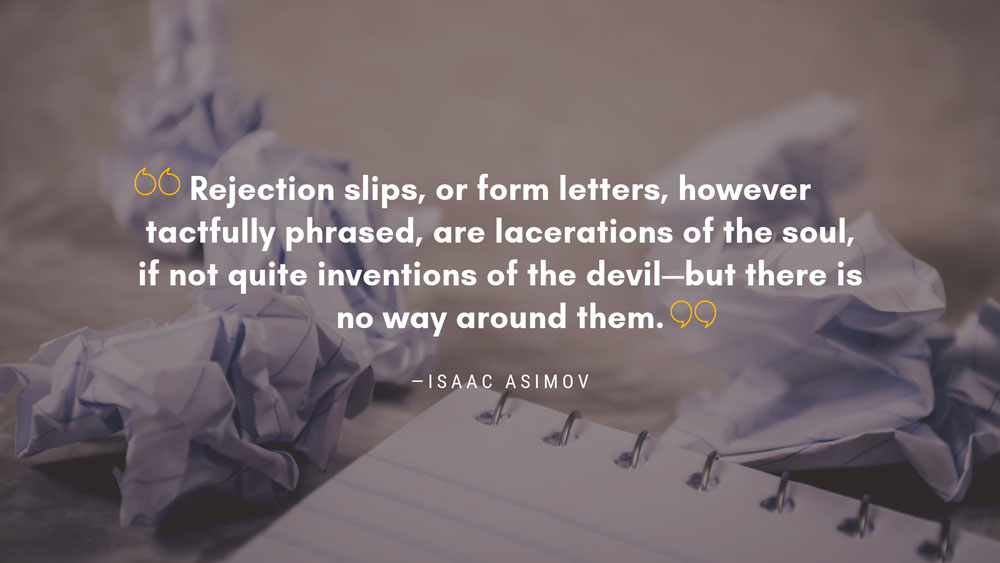
Asimov has a point. All writers, however talented, must brave an onslaught of rejection at some point or another. But instead of drowning in it, the best writers learn how to deal with rejection productively.
Fortunately, we have four sure-fire ways to get the wind back in your sails, your paper back in the mail, and your manuscript where it belongs: in print.
Step 1: Take a Breath
There are a few important points to make before we go any further.
First, everyone who submits papers gets rejected. Everyone. Resubmission is a part of the process.
Second, having your paper rejected does not necessarily mean that your paper deserves to be fed to the shredder. Maybe your paper just wasn't right for that particular journal. Maybe there were some methodological flaws you didn't notice. There are many reasons a paper might get rejected. That's why it's important to have some backup journals in place, which we will get to later.
Third, most (if not all) reviewer comments are a tad nasty. That's a peer reviewer's job—to evaluate, critique, and determine whether or not your article is suitable for publication. Don't take it personally. Even accepted manuscripts don't make it to the other side without getting scarred by red ink.
Fourth, there's a lot of luck in the process. So, before doing anything drastic, just remember that while it might seem like the odds aren't in your favor, resubmission is the only path to publication.
Keep your chin up, and learn to get comfortable with rejection. It doesn't have to be a negative thing. Rejection presents a valuable opportunity for growth. Rejection is a crucible: those who make it through the fire will be all the stronger for it.
Or, as author Chuck Wendig so eloquently put it:
"Rejection refines us. Those who fall prey to its everlasting soul-sucking tentacles are doomed. Those who persist are its survivors. Best ask yourself the question: what kind of writer are you? The kind who survives? Or the kind who gets asphyxiated by tentacles of woe?"
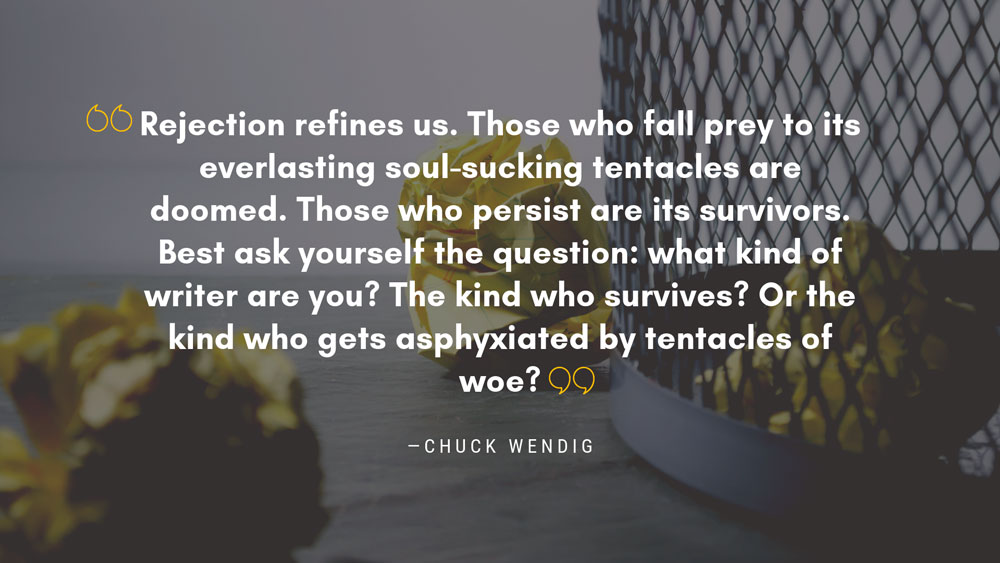
Remember: each rejection brings you one step closer to acceptance.
Step 2: Review the Comments
Now comes the hard part: reading the comments.
This can be exceptionally difficult for any writer at any level. Nobody likes to have all of their paper's flaws and imperfections glaringly put on display. And this is your baby! You spent months churning this report out. You lost sleep. You gained weight. It can be hard not to take the less-than-flattering comments personally.
It’s easy to retreat into anger. What do they know? My paper deserves to be published!
Yes, this response is tempting. And expected. But, when the comments start to sting, try to remember how invaluable a peer review actually is. (If you'd like some help navigating the peer review process, check out this article.) A world-leading expert spent some of their valuable time to comb through your manuscript. They don't want you to fail. They want you to succeed.
It would not only be unwise to throw your peer reviewer's advice away, but it would also be detrimental to your own success.
Hopefully, enough time has passed that you can conduct a peer review of your own. What works? What doesn't work? What needs clarification? What's redundant? You can disagree with your peer reviewer. However, you should weigh everything with caution.
If it's simply an issue with language or formatting, consider hiring an editing service to ensure that your paper is judged on merit and not rejected because of spelling and grammar errors.
It can be difficult to untangle your own feelings, view your paper with an objective eye, and evaluate the peer reviewer's comments. Difficult, but not impossible.
Take a few days if you need to, but never discount the gift that has been given to you.
Step 3: Look at Your Backups
So, your journal of choice turned you down. There's no need to sugarcoat it. It sucks.
You have the option of resubmission. Of course, this would necessitate another extensive draft to address (or at least respond to) all your peer reviewer's comments and, potentially, a professional edit and proofread. Check out our Ultimate Journal Article Submission Checklist for more guidance.
You could also submit to different academic journals. (Check out the list of academic journals Scribendi's clients have been published in for inspiration.) What was your second choice? Your third choice?
Make a list. The more options you have, the better. With each rejection you get, fine-tune your paper and submit again. And again and again and again.
They've identified the weak points in your argument. That's amazing! Now you can fortify them.
Come up with a list of 20 academic journals before your first submission. That way, when the first rejection slip comes in, it won't be as demoralizing. You already have a plan, a direction. You can take another crack at your paper and send it down the assembly line.
No one said this would be easy. But remember, even the best papers and the best academics get rejected by academic journals.
Dealing with rejection is a skill in and of itself, and all skills can be developed.
Step 4: Have Hope
Have faith in your manuscript. Have faith in yourself. Remember that all great work will eventually be published somewhere.
Ben Bova, author of 124 science fiction and non-fiction books and former editor of Analog Science Fiction and Fact and Omni, identified three qualities every successful writer must have:
- "Talent, which is innate. No one can teach you talent."
- "Craft, which can be learned."
- "Perseverance. Of the three, the most important is perseverance. Writing is a hard, lonely, often bitter calling. Only tremendous perseverance can see a writer through the pains of disappointment and rejection. Only those writers who persevere can become successful."
Conclusion
It might take one rejection. It might take 10 rejections. But, if you persevere, you will one day have the satisfaction of seeing your manuscript published.
In addition, remember that you're not alone. Great academics get rejected. Great papers get rejected. It's a normal, natural part of the adventure you have chosen to embark upon as an academic.
Take it on the chin. Collect your rejection slips with pride. Many, many others would have given up long ago. And you know what? If you have a great paper in the works and enough hope, you'll learn how to deal with rejection from academic journals and get published once and for all.
Image source: monkeybusiness/elements.envato.com
Strengthen Your Journal Article before Resubmission
Hire an Expert Academic Editor, or Get a Free Sample
About the Author
Scribendi’s in-house editors work with writers from all over the globe to perfect their writing. They know that no piece of writing is complete without a professional edit, and they love to see a good piece of writing turn into a great one after the editing process. Scribendi’s in-house editors are unrivaled in both experience and education, having collectively edited millions of words and obtained nearly 20 degrees collectively. They love consuming caffeinated beverages, reading books of various genres, and relaxing in quiet, dimly lit spaces.




